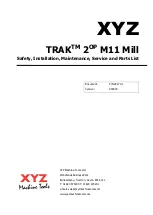
5
| Switch Design
14
Wieland Electric GmbH | BA001106 (Rev. A) | 01/2017
Note!
Routing communications and power wiring through the same conduit may cause signal interference. To
avoid interference and signal degradation, route power and communications wires through separate con-
duits.
5.7.3
Wiring the power outputs
Make sure the power is not connected to the switch be-
fore proceeding.
1.
Loosen the screws securing the terminal block to the
terminal block receptor.
2.
Remove the terminal block from the switch.
3.
Insert a small flat-bladed screwdriver
in the V1+/V1- wire-clamp screws,
and loosen the screws.
4.
Insert the negative/positive DC wires
into the V1+/V1- terminals of PWR1. If
setting up power redundancy, connect
PWR2 in the same manner.
5.
Tighten the wire-clamp screws to
secure the DC wires in place.
6.
Align the terminal block over the terminal block receptor
on the switch.
7.
Insert the terminal block and press it in until it is flush
with the terminal block receptor.
8.
Tighten the screws on the terminal block to secure it to
the terminal block receptor. If there is no gap between
the terminal block and the terminal receptor, the termi-
nal block is seated correctly.
NOTE
Wire clamp screws
DC wires


































